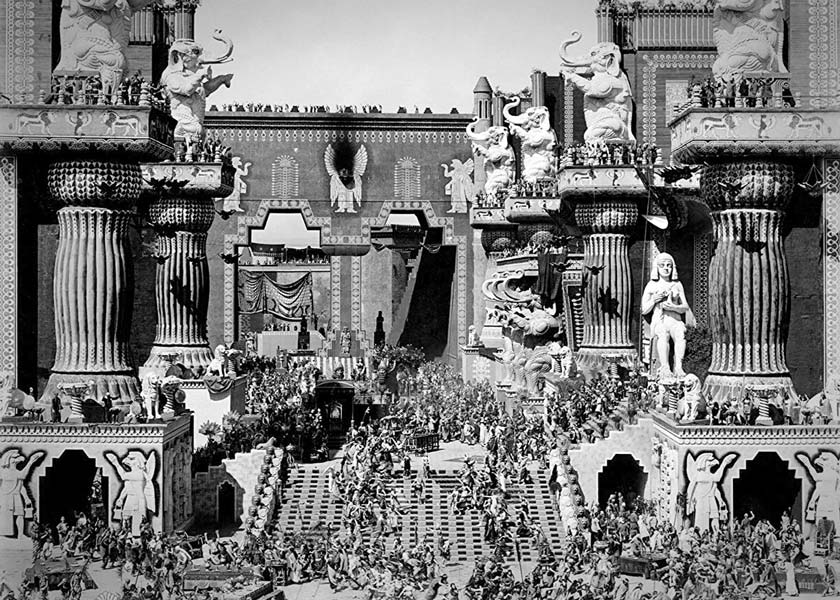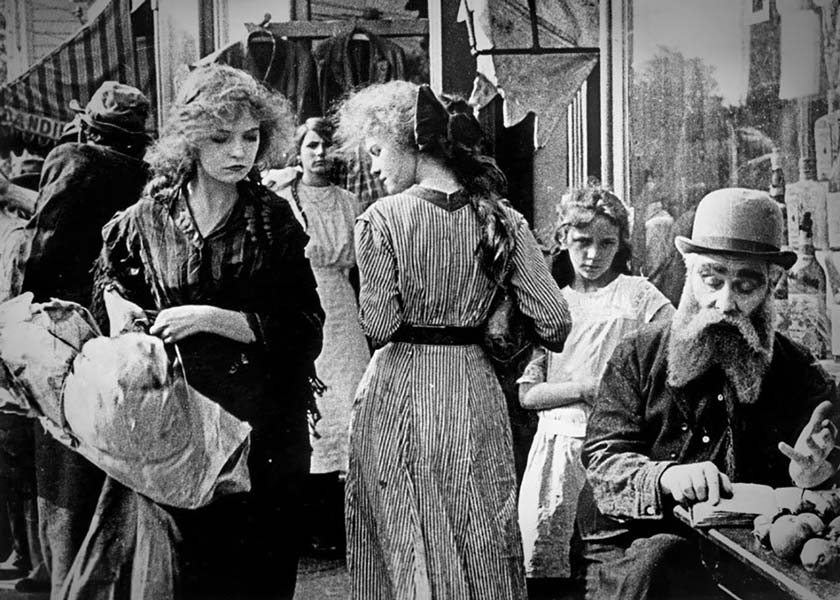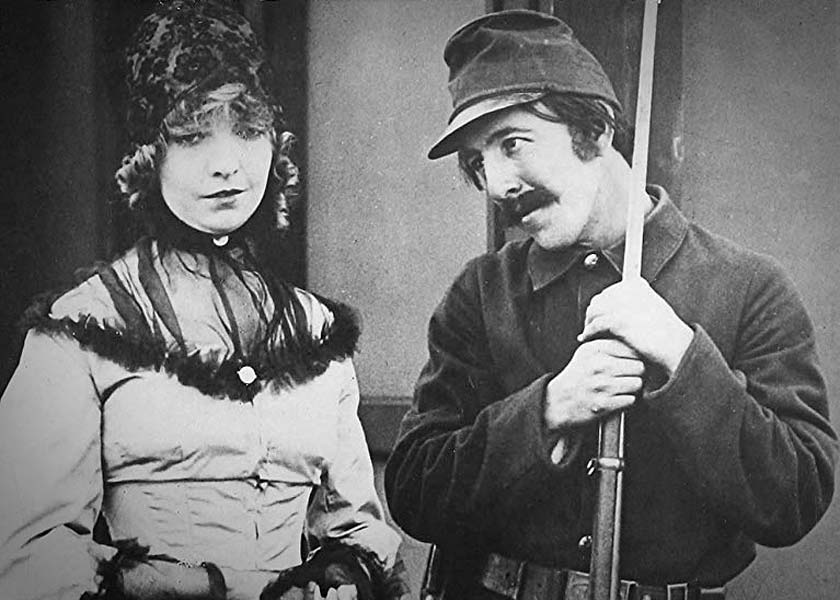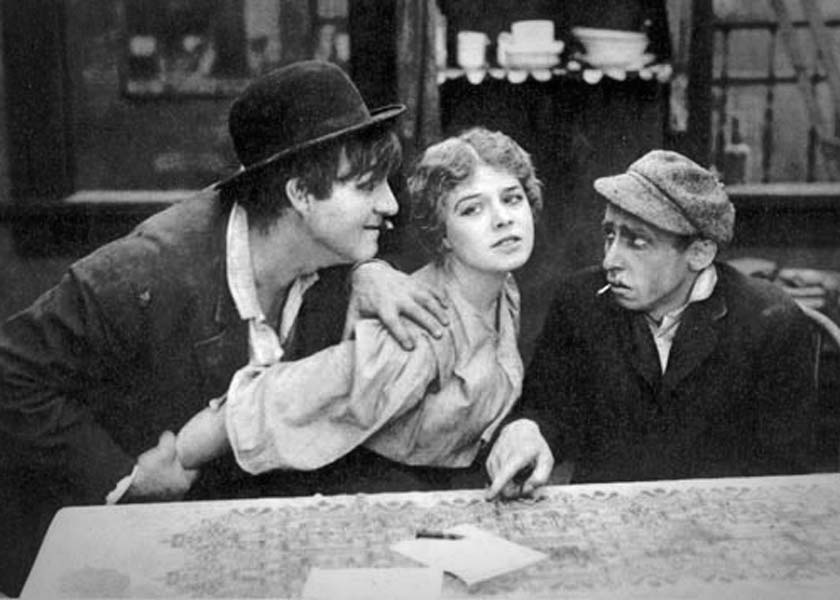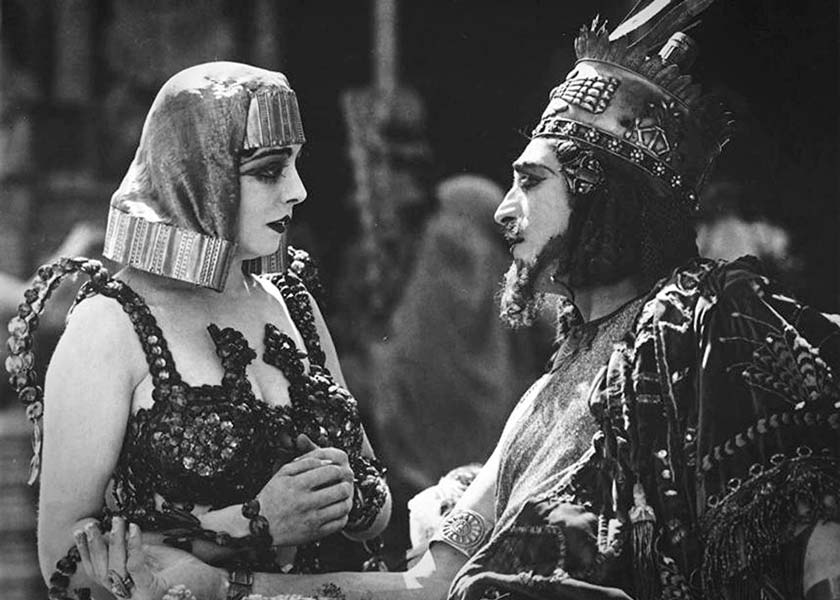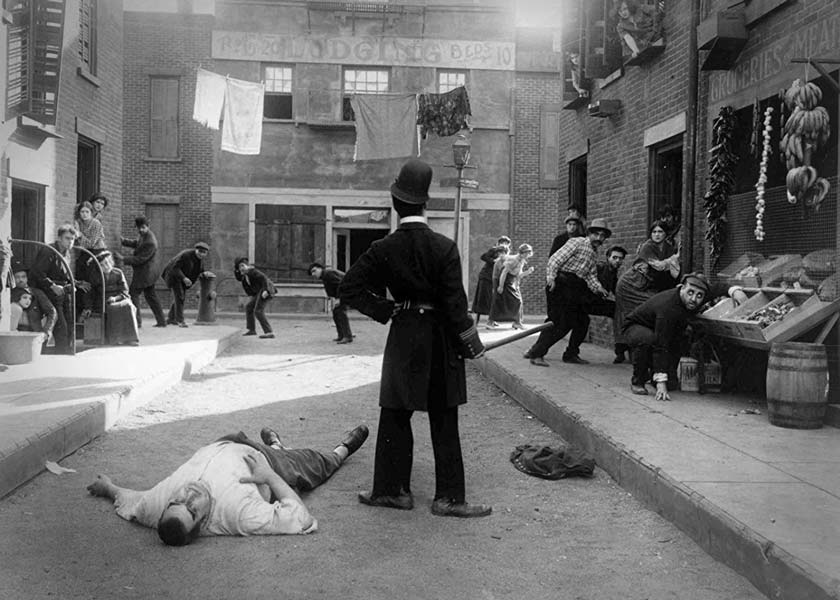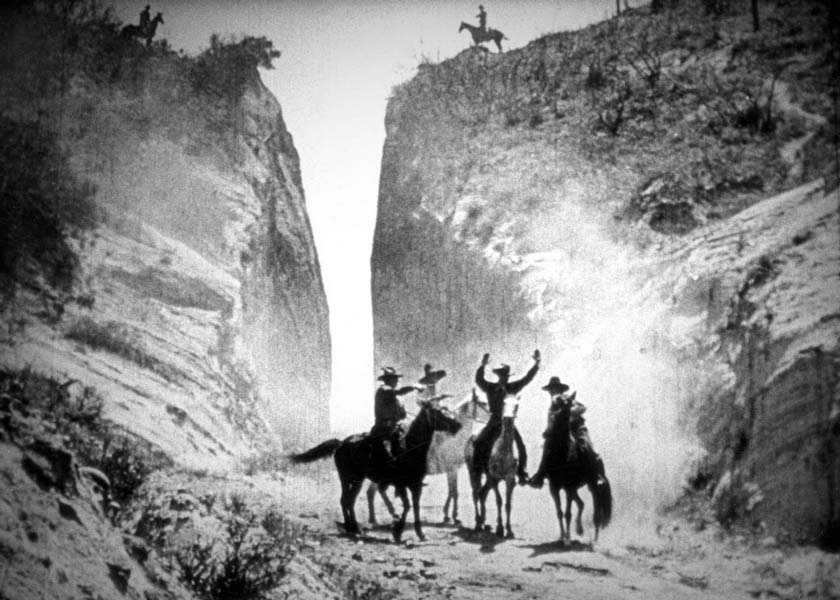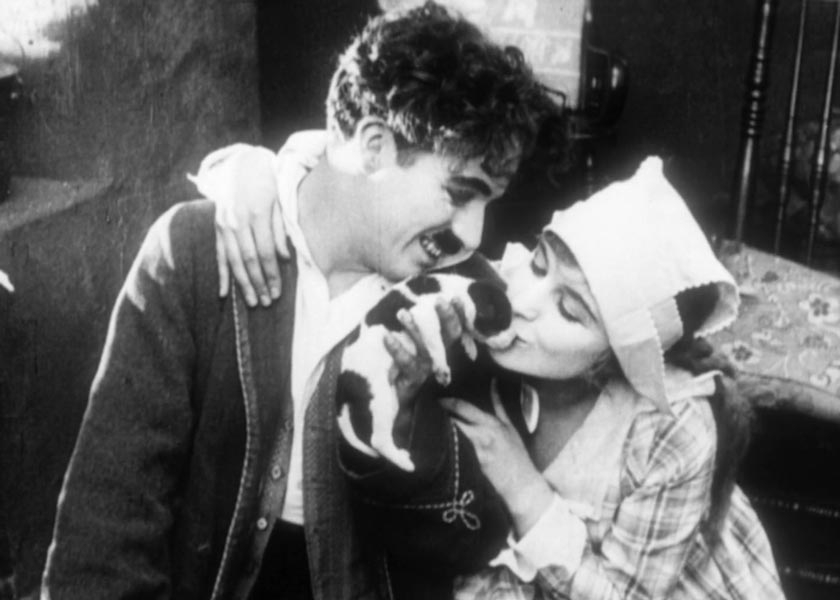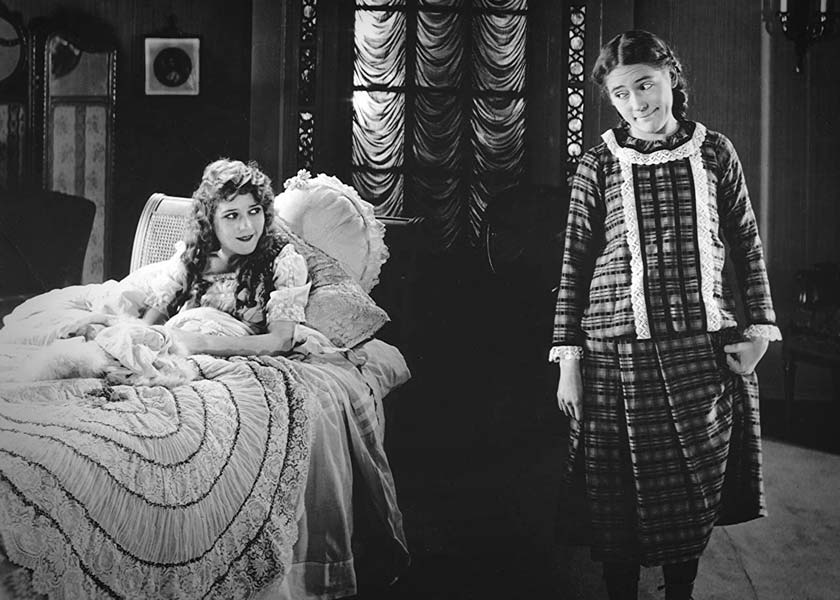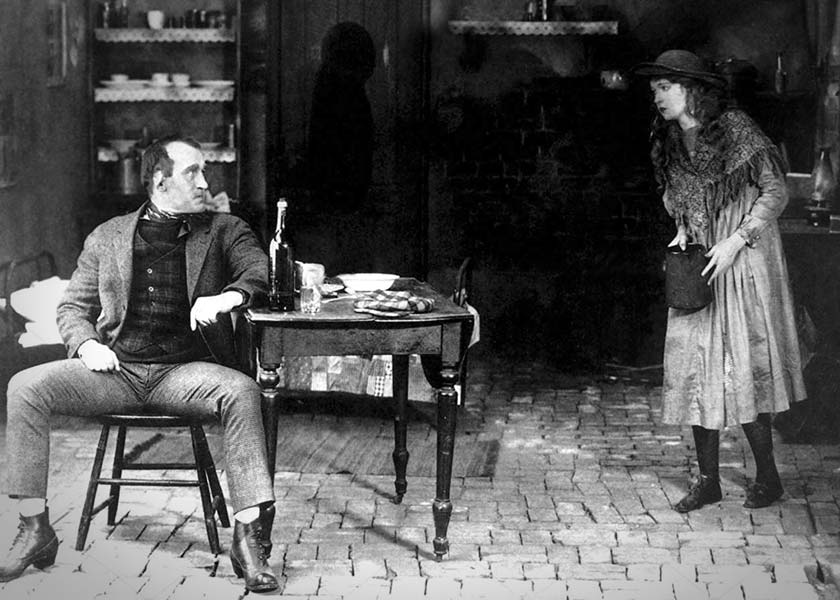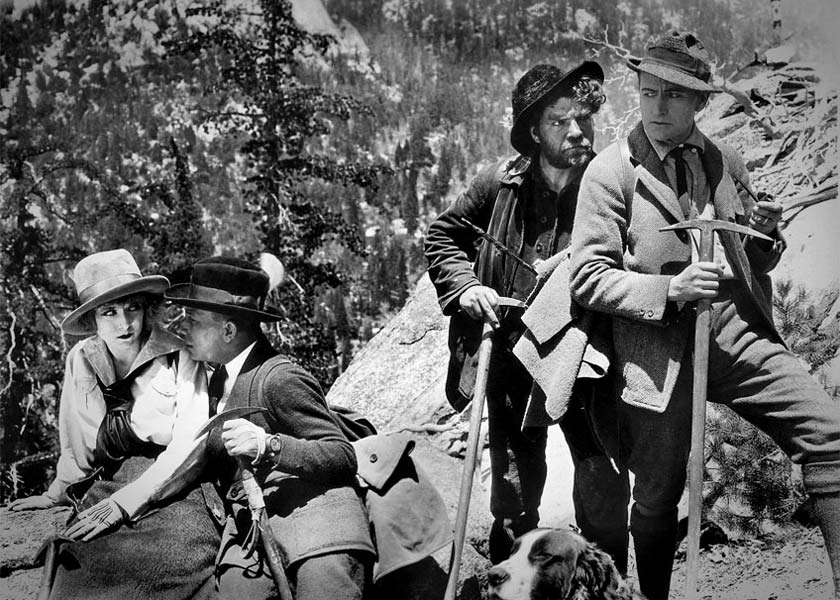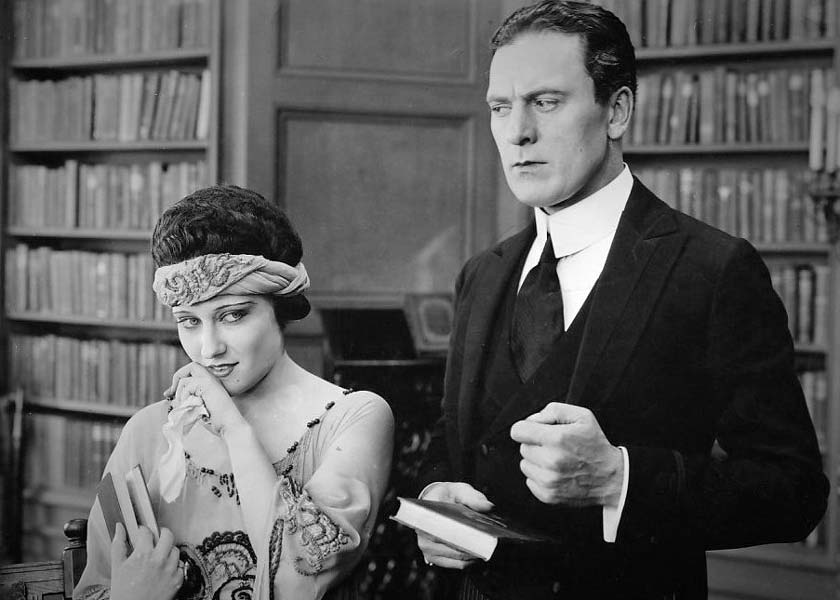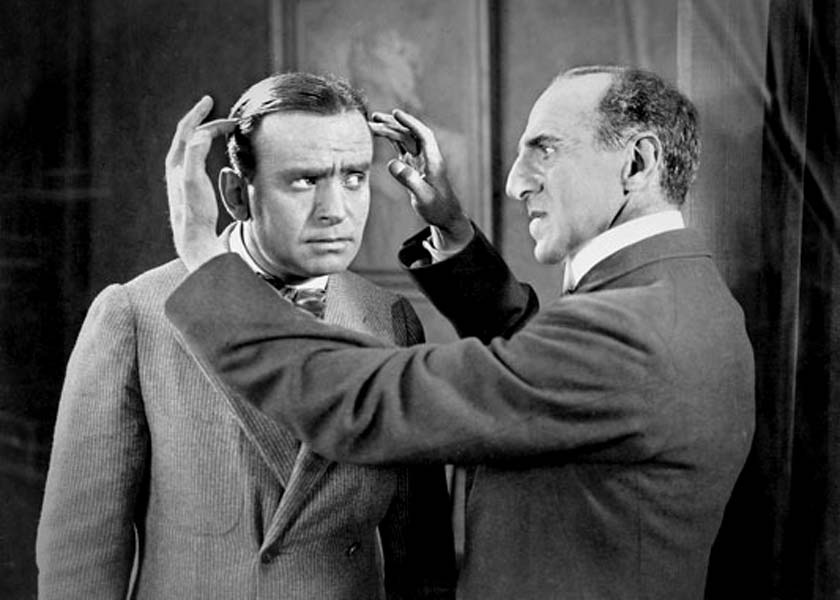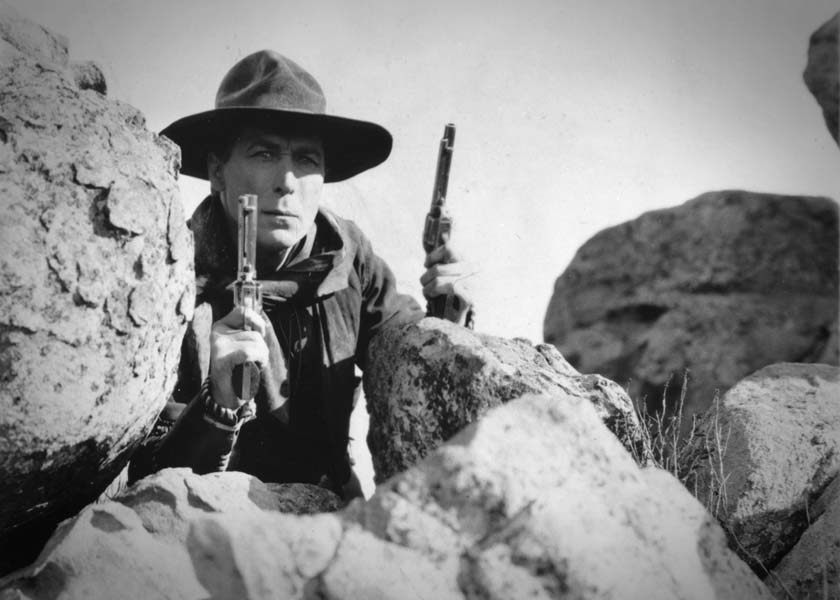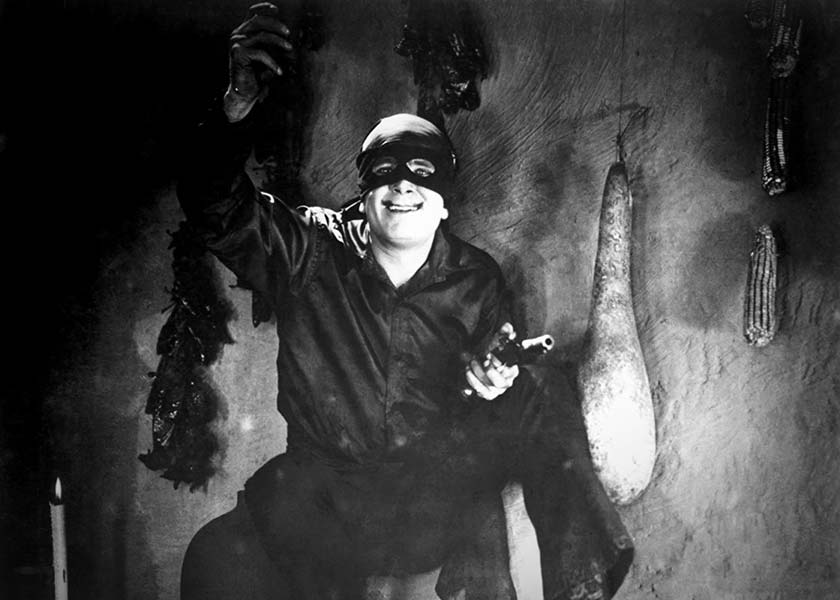Lists of great American films have been published by a variety of sources, including the American Film Institute. Our chronological list of great American films of the early silent era, 1911-1920, features some obscure and less celebrated masterpieces, as well as works by well-known artists such as D.W. Griffith and Charlie Chaplin.
The First Features Films
From the inception of narrative films in around 1900 until about 1912, American
films were only one or two-reels long (one reel being approximately 10 minutes).
The first films did not credit cast and crew. Instead, only the production studio
was named at the beginning of a film. Early films were seen at small storefront
theaters, called nickelodeons
because they charged a nickel for entrance. A
typical show lasted about an hour and consisted of several short films.
Filmmaking techniques advanced significantly during this early period. As audiences increased, their interest in the people involved in making the films also increased, and it became standard to list the names of the actors, the director, and some members of the crew in the opening credits of films. The public quickly identified favorites among the filmmakers.
By 1913, some producers and directors were prepared to film more complex stories that required running times longer than two reels to tell. Once introduced, the feature films of five or more reels, and a running time of at least fifty minutes, quickly became the motion picture standard.
Filmmakers, 1911-1920
Our first list of great films includes the best-known directors and actors of this period, including D.W. Griffith, Charlie Chaplin, Mary Pickford, and Douglas Fairbanks. Most of these filmmakers began their careers before 1910, and many of them continued to make films into the talking picture era. The long-term success of these individuals resulted from their ability to please the moviegoing public. The greatness of their films results from their mastery of all aspects of early silent film technique. These films demonstrate that before 1920, the best movies possessed advanced levels of storytelling, characterization, photography, and lighting.
Four of the films are directed by D.W. Griffith, who was at his apex in the late 1910s. Griffith entered film in 1908 and by 1913 had directed hundreds of one-reel short films which are well-known for their creativity and clarity of expression. Although many of Griffith's feature length films, such as Broken Blossoms (1919), are small-scale dramas, his best-known films are the massive epics The Birth of a Nation (1915) and Intolerance (1916). Despite his early success, Griffith's style and storylines did not keep pace with changing outlooks after 1920.
Cecil B. DeMille began his career in 1912 and was a major Hollywood director up to his death in 1955. DeMille made his least pretentious and bloated films in the years before 1920.
Charles Chaplin's films of the 1910s are all shorts. The longest,
Shoulder Arms (1918), runs only 45 minutes. He made his first
feature, The Kid, in 1921. Chaplin established his
Tramp
character in 1914, his first year in films. He plays this character
in many of his shorts and all of his silent features.
Mary Pickford was 16 years old when she made her first film in 1908. She quickly became a favorite of the public, and by 1918 she was one of the best-known women in the world. Pickford realistically played a child in several films despite being in her twenties. In the course of the film Stella Maris (1918), she matures from child to adult.
Marshall Neilan, who entered films in 1908 as an actor and director, was Pickford's regular director from 1917 to 1920. After his directorial career declined in the early 1930s, he continued in the film industry as a writer and editor.
Douglas Fairbanks' two listed films, When the Clouds Roll By (1919) and The Mark of Zorro (1920), represent the two stages of his silent film career. His films of the 1910s are comedies in which he often portrays a modern, go-getting, young American. The Mark of Zorro, his first costume film, initiated Fairbanks' swashbuckling heroes of the 1920s.
Two Westerns are included on our list. William S. Hart was 50 years old when he released his first film in 1914. His gritty, restrained, and realistic Westerns were well-made and quickly became popular with the public. Due to his advancing age, changing public tastes, and competition from younger actors such as Tom Mix, Hart retired after Tumbleweeds (1923).
During his fifty-year career, John Ford directed over forty feature-length Westerns, of which 26 are silents. His career began with a series of Westerns that starred Harry Carey, usually playing a character named Cheyenne Harry. Most of these are films have been lost. There are only two known survivors, Straight Shooting (1917) and Bucking Broadway (1917).
The Films
Further Reading

